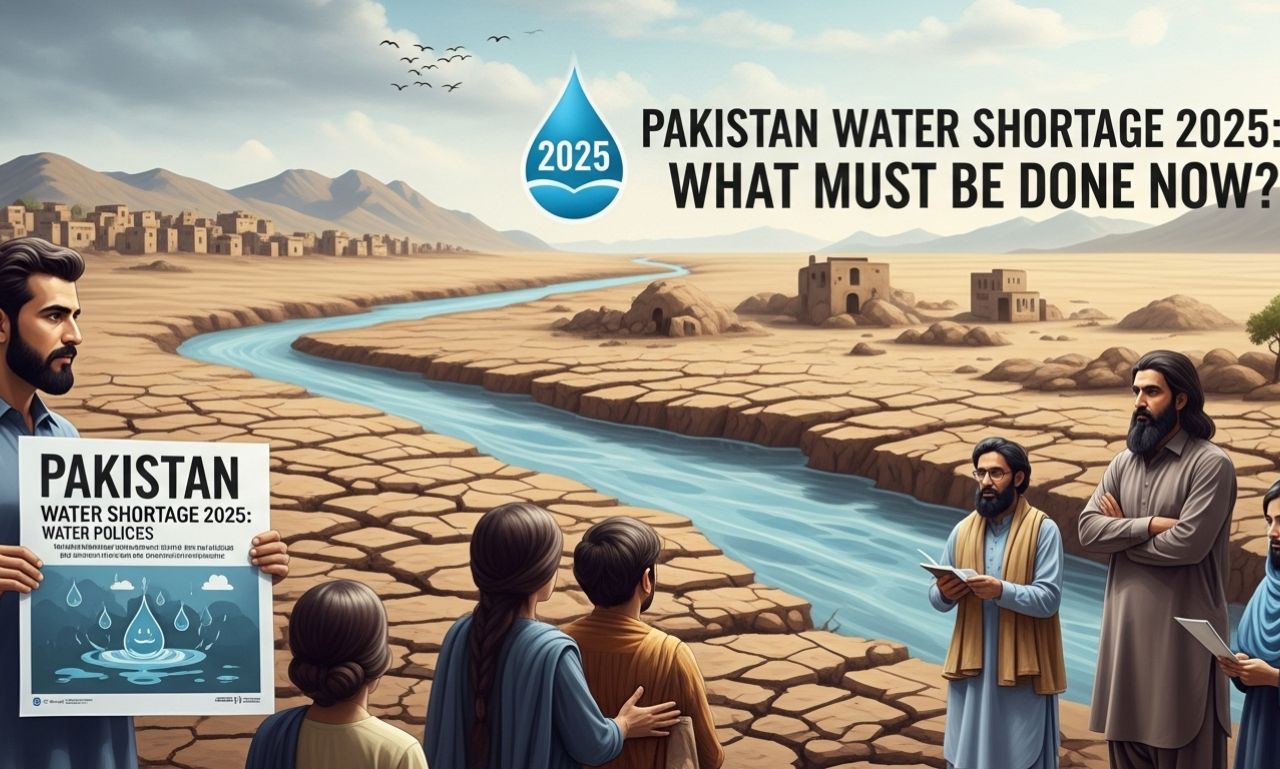Pakistan is a land gifted with lavish resources of water. It is a land where crystalline glacial water rolls down the mighty Himalayas and Karakorm peaks to the fertile plains and break into intricate web of canal system that irrigates over 16 million hectors of land, out of 43 million hectors of cultivable land available. The other sources of water available in Pakistan are: Rain Fall and Surface Water available in rivers and underground water.
In the surface water we have three rivers drainage basins.
- The Indus Basin River
- Closed Basins Khran Desert
- Makran Coastal Basin
The Indus Basin River
The Indus River system is one of the most important water system in Asia. It originates near the Kailash range in Tibat. The river flows to the west and eventually falls into Arabians sea. The total area of the Indus Basin is about 365,000 square miles.
Indus river has tributaries at both western and eastern sides. It’s eastern tributaries are The Ravi, The Beas, The Chenab, The Sutllej, and The Jhelum. These five rivers meet at Panjnad. Its western tributaries are the river Swat, Kabul, Kurram, Tochi, Gomal, and Zhob. These river join Indus in Khyber Pakhtun Khwa.
The Indus river system is considered as the life blood of Pakistan. It sources of water are snowing, glacier melting, and rainfall. From Indus river system 141.67 million square feet of water is been received. In 1960, Pakistan signed with the India a water treaty called, “Indus Water Treaty” which brought major changes in the sources of water for Pakistan. This treaty gave the right of three eastern river, Beas, Satluj, and Ravi to India whereas the water of Indus, Jhelum and Chenab is to be used by Pakistan.
Closed Basin Kharan Desert
It consist of areas of mountain basin of Quetta and basin of tributaires draining into Kharan desert. Its main rivers are Pishin Lora,s Rakhshan, Mashkhel, and many other streams. It covers an area of 120,100 square kilo meter. Its main sources of water are rainfall and snow. Here we are getting approximately 4.5 million acre feet of water.
Makran Coastal Basin
The Makran Coastal Basin consist of streams of Malir, Hub,Porali, Kud, Hingol, Nai, Mashhai, Dasht, Nihing, and Kech. It covers an area of 122,400 square kilo meter and it’s main source of water is rainfall. From this Basin 0.78 million acre feet of water.
The construction of dams and barrages by India over the river Chenab and the river Jhelum created the problem of water shortage for Pakistan. This shortage is becoming more and more severe with the passage of time. According to the UNO report, Pakistan ranks at the 7th position in the list of the countries facing water crisis. Presently, Pakistan has surface water of 153 million acre feet and underground water resources only 24 million acre feet. Pakistan may face water shortage by 2025 AD.
Urgency of Water Storage
The population of Pakistan is increasing at the rate of 3.2% presently, we have to feed more than 200 million people and if the rate of increase in population remains the same, then it will be almost double by the year 2025, leading to at pressure on the underground water resourses. Factors such as global warming and climate change will further aggravate the problem of water scarcity.
According to a search study on water resources of Pakistan, water of economic values of $70 billion is been thrown into sea every years due to non construction of water reservoirs. Being water starved country, which has the foreign reserve of only $20 billion, we can not afford throwing water of the economic value of $70 billion every years into sea.
Urban Groundwater Crisis Looms
Study of Pakistan Counsel of Research on the water resources of Pakistan (PCRWR) revealed that rapid depletion of ground water may soon worsen the water crisis in Pakistan’s major cities, causing a drought like situation. Such water crises need to be taken on war footings; otherwise, a large section of Pakistan population, especially those living in big cities, will be facing sever shortage of water.
Due to excessive pumping of underground water, the quality of water is been contaminated rapidly with heavy metals like copper, nickel, cobalt e.t.c, which can pose some serious health hazards and can cause the spread of lethal diseases in the population, especially in the big cities.
Fixing Pakistan’s Water Future
The problem of water shortage in Pakistan has gained the momentum as our water storage capacity is only for thirty days, and Pakistan has the forth highest rate of water use in the world. To over come this horrible water scarcity we should take these remedial measures immediately:
- Strict implementation of water policy 2018.
- Formulation of nation action plan for judicious use of available water.
- Construction of water reservoirs.
- Control on over pumping of underground water and it’s wastage.
- Increase the use of water efficient crops.
- Switch over from conventional agriculture to conservative agriculture.
- Adopting water efficient method of irrigation like sprinkler and drip irrigation.
Closing Points:
The problems faced by the water sector in the country are many, acute and serious. Therefore, building of more reservoirs and effective management strategy are the need of the hour. The implementation of these recommendations will enable the country to over come the challenges, and achieve the objectives of sustainable development and management of water resources. It is said the wars of the 21st century will be fought for water. We should therefore save now to prevent war.
